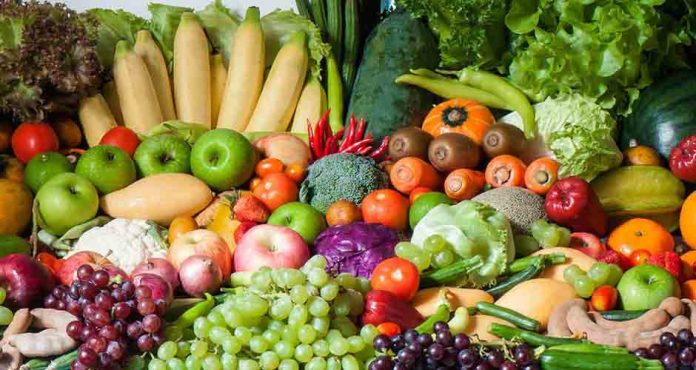- If you are on the hunt for the best diet to follow to lower high blood pressure, look no further than the tried-and-true DASH diet
An alarming amount of Americans have high blood pressure, with almost half of the country’s population having this diagnosis. Having high blood pressure, or hypertension, means that the force of your blood pushing against the walls of your blood vessels is consistently too high. And over time, this additional stress on the body can increase a person’s risk for heart disease and stroke.
If you are one of the many people who are managing hypertension, know that all hope is not lost if you want to lower your blood pressure. Sure, there are some factors that are completely out of your control when it comes to developing this condition—think genetics and family history. But, there are factors that play into blood pressure health that are completely modifiable. From incorporating more physical activity in your day to refraining from smoking tobacco, there are many things that can be done to lower high blood pressure.
And among the sea of things that people can do to help reduce their blood pressure levels, diet is one that has been shown to be extremely promising. And for over 20 years, following the DASH diet has been shown to lower blood pressure among those who suffer from hypertension, making it the #1 diet to lower high blood pressure, according to science.
Related: The #1 Snack to Eat for Better Blood Pressure
Why Is the DASH Diet the Best Diet to Lower High Blood Pressure?
The Dietary Approaches to Stop Hypertension (DASH) diet is a way of eating that, as the name implies, was developed to stop hypertension. Unlike many fad diets that have their time in the spotlight and then fizzle out, the DASH diet has been popular since the early 1990s and isn’t stopping any time soon, thanks to the results that have been seen by people following this diet.
If you are going to follow the DASH diet, plant-based foods will make up the bulk of your plate. Foods like fruits, vegetables, seeds, nuts and legumes will be the shining stars, and ultra-processed foods that contain large amounts of added sugars and salt will only make a rare appearance.

Related: 30-Day DASH Diet Meal Plan
In general, here are some important guidelines to follow when incorporating the DASH diet into your lifestyle:
- Emphasize vegetables, fruits and whole grains
- Include fat-free or low-fat dairy products, beans, nuts and vegetable oils
- Limit poultry, meat and fish intake to no more than two servings per day
- Limit foods that are high in saturated fat, such as fatty meats, full-fat dairy products and tropical oils
- Limit sugar-sweetened foods and drinks
- Limit alcohol intake
- Limit sodium intake to less than 2,300 mg/day
Along with emphasizing and limiting certain foods, the DASH diet suggests focusing on specific nutrients, as well. Calcium, magnesium and potassium are micronutrients that play a role in blood pressure regulation and therefore are highlighted on this diet as well.
The nutrients that this diet provides the body help support a healthy blood pressure in a natural way. From fiber to calcium to the many other micronutrients that this way of eating provides, the DASH diet is certainly an evidence-based approach to managing blood pressure.
Older data suggests that the DASH diet can lower blood pressure in as little as two weeks. And over and over again, results from large, randomized, controlled trials show that the DASH diet reduces blood pressure significantly. Because of this strong evidence, DASH has been a consistent part of national blood pressure and dietary guidelines.
Easy Tips to Follow the DASH Diet
Having high blood pressure is unfortunately very common. But with some changes in eating habits, it is entirely possible to lower blood pressure in a natural way, particularly by following the DASH diet.
When starting to follow the DASH diet, here are some tips to get you going:
- Enjoy a serving of fresh or frozen fruit as dessert after a meal instead of a sugar-sweetened treat, like these frozen grapes.
- Add unexpected vegetables to your traditional dishes, like adding sweet potatoes in this Chicken Chili with Sweet Potatoes.
- Swap out fattier cuts of meat for chicken breast or other lean choices.
- Explore meatless lunch options like a Veggie and Hummus Sandwich instead of a deli meat sandwich.
- Use herbs and spices instead of table salt to add flavor to your dishes.
- Drink infused water or sparkling seltzer instead of sugar-sweetened beverages.
- Use your own homemade salad dressing, like this All-Purpose Vinaigrette, instead of using premade options which tend to be high in sodium.
- When making breakfast, opt for whole-grain options like this Peanut Butter-Banana Cinnamon Toast instead of choosing toast made with white bread.
- Use whole grains as a base for your dishes, like in this Mediterranean Chicken Quinoa Bowl.
Originally published in Eating Well, https://www.eatingwell.com/article/7938379/the-1-diet-to-lower-high-blood-pressure-according-to-science/

